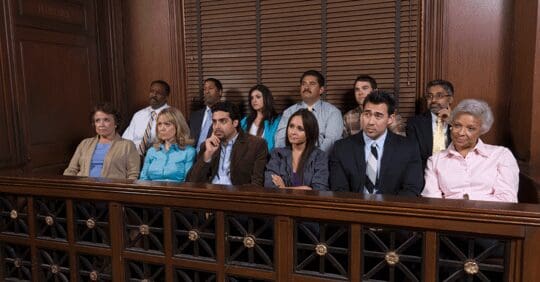The Karmelo Anthony Case: A Multifaceted Intersection of Race, Self-Defense, and Societal Perception
A Peculiar Case
The case of Karmelo Anthony is a peculiar one, especially in terms of community reactions. On the surface, many frame it around race. This is despite the lack of racial comments during the altercation between Karmelo Anthony and Austin Metcalf.
The Encounter: What Transpired?
On April 2, 2025, at approximately 10:01 AM, officers from the Frisco Police Department responded to a tragic stabbing incident at David Kuykendall Stadium in Frisco, Texas. The altercation unfolded on the visitors’ side of the stadium, specifically under the Memorial High School tent in the bleachers. Karmelo Sincere Anthony fatally stabbed the victim, 17-year-old Austin Metcalf, in the chest. This happened after a confrontation that began when Austin asked Anthony to move from under the tent. Witnesses reported that during the argument, Anthony threatened Austin. This led to a physical struggle in which he pulled out a knife and stabbed Austin. Despite immediate medical attention, Austin later succumbed to his injuries.
The Aftermath: Polarization and Claims of Self-Defense
Following the incident, polarization began, fueled by false or unconfirmed information circulating in the community. Karmelo Anthony’s claim of self-defense led many to choose sides, further intensified by the racial dynamics of the situation. This has attracted various analyses from television hosts and micro-influencers, each bringing their own perspectives to the forefront.
Influencers Weigh In
Television influencers like Meghan Kelly and Quanell X have taken positions on the case. Micro-influencers, such as Jack Lang, organizer for Protect White Americans, have also made their positions clear. Another character appeared on Metastud.TV, claiming to be a witness and aligning with Karmelo Anthony’s viewpoint. This individual highlighted the size difference between the two people involved.
The Size Disparity: A Critical Factor
The analysis of the size difference between Austin Metcalf and Karmelo Anthony is crucial in evaluating the self-defense claim. Austin, weighing 220 lbs and standing 6 feet tall, is significantly larger than Karmelo, who is 5’9” and weighs 130 lbs.


This inequality raises several important considerations:
- Perception of Threat:
The court may evaluate whether Austin’s larger size influenced Anthony’s perception of threat, as people often view larger individuals as more intimidating. However, the court could challenge the reasonableness of Anthony’s fear based on the circumstances. - Proportionality of Response:
Texas law requires responses to perceived threats to be proportional. The use of deadly force by a smaller individual against a larger one raises concerns about whether Anthony’s response was excessive. This is especially true if the altercation involved only minor physical contact. - Opportunity to De-escalate:
The court may evaluate whether Anthony had the opportunity to retreat or de-escalate the situation. If it finds that he could have safely disengaged, this could weaken his self-defense claim. - Witness Perspectives:
Witness accounts may influence the court’s view of the confrontation dynamics. If witnesses describe Austin as not being aggressive, this could compromise Anthony’s claim of self-defense. - Legal Standards for Self-Defense:
The legal standards for self-defense require a reasonable belief in the necessity of force. The size difference could lead the court to question the reasonableness of Anthony’s belief in the need for deadly force.
Community Perceptions of Size and Intimidation
As a 6’3” individual, I can attest that society often views larger individuals as more threatening. This perception is evident in political discussions. Especially regarding the inequality of a male competing against a female in physical sports. The community perception of intimidation based on size is likely to resonate with jurors. Many of them may have experienced similar feelings.
The Political Landscape
This case is likely to become political, generating diverse perspectives that may or may not reach the public. The situation is historical but much more intricate than most people would fathom. Race is one of the most obvious themes.

The Judicial Process Ahead
Karmelo Anthony is currently out on bond, reduced from $1 million to $250,000. As the case unfolds, emotions have run high even before the trial begins. A judge and jury will need to hear both sides of the argument before reaching a conclusion. Although Karmelo has no prior criminal history, he must explain why he chose to handle the situation as he did.
Understanding Texas Self-Defense Laws

In Texas, Chapter 9 of the Texas Penal Code governs self-defense claims. This outlines the justifications for the use of force and deadly force. A person is justified in using force against another when they reasonably believe that the force is immediately necessary to protect themselves. This justification is against the other’s use or attempted use of unlawful force. This belief must be reasonable, reflecting what a typical person would perceive in a similar situation.
Deadly force is justified if an individual reasonably believes it is necessary to protect against another’s unlawful deadly force. This force is also justified to prevent certain serious crimes, such as murder or robbery. Importantly, Texas law does not impose a duty to retreat. It allows individuals to stand their ground when faced with imminent danger. Additionally, individuals may use force to protect others. Under specific circumstances, they may also use force to defend their property. If a person mistakenly believes they are in danger, this can still support a self-defense claim. This is provided the mistake is reasonable.
In self-defense cases, the burden of proof lies with the prosecution. The prosecution must disprove the claim beyond a reasonable doubt once the defendant raises it. These laws aim to empower individuals to protect themselves. They establish clear boundaries to prevent the misuse of self-defense claims.
Final Thoughts: Navigating the Complexities of the Karmelo Anthony Case
As the Karmelo Anthony case unfolds, interplay of legal standards, community perceptions, and specific facts of the incident will be critical. These elements will determine the outcome of his self-defense claim. The nuances surrounding the size difference and the nature of the confrontation will significantly influence the court’s evaluation of his actions.
In a society that often simplifies complex issues into binary choices, this case serves as a reminder of the layered realities that exist. It challenges us to consider not only the legal implications but also the societal narratives. These narratives shape our understanding of justice, race, and self-defense. As we await the trial, it is essential to approach the situation with an open mind. We must recognize that the truth often lies in the gray areas rather than the black and white.

The Karmelo Anthony case is not just a legal battle; it is a reflection of the societal tensions that persist in our communities. As we traverse this emotionally charged landscape, we must strive for a deeper understanding of the factors at play. We must acknowledge that every story has multiple sides and that justice is often a complex pursuit.
Source: Larry Brown Sports
